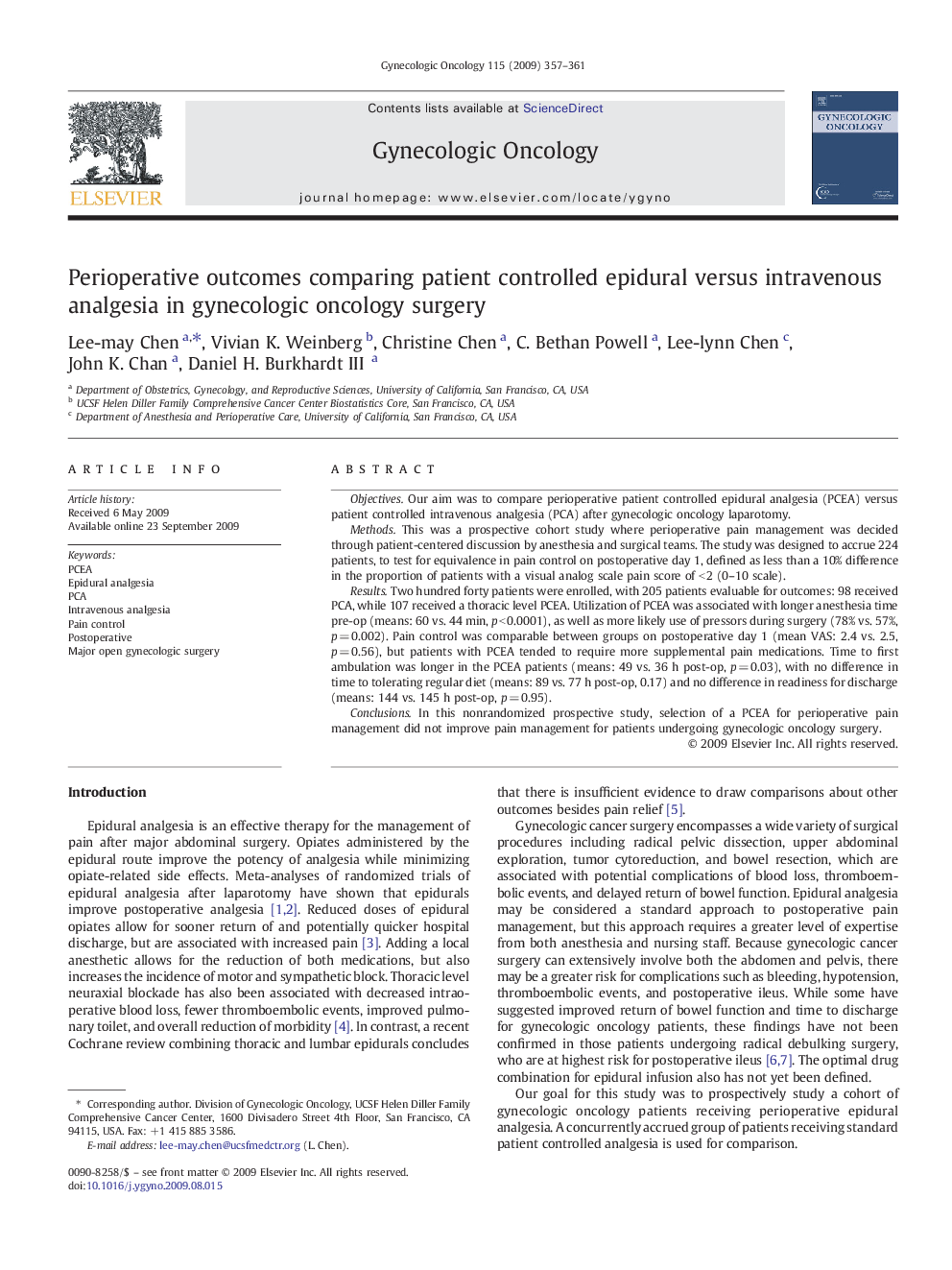| Article ID | Journal | Published Year | Pages | File Type |
|---|---|---|---|---|
| 3943243 | Gynecologic Oncology | 2009 | 5 Pages |
ObjectivesOur aim was to compare perioperative patient controlled epidural analgesia (PCEA) versus patient controlled intravenous analgesia (PCA) after gynecologic oncology laparotomy.MethodsThis was a prospective cohort study where perioperative pain management was decided through patient-centered discussion by anesthesia and surgical teams. The study was designed to accrue 224 patients, to test for equivalence in pain control on postoperative day 1, defined as less than a 10% difference in the proportion of patients with a visual analog scale pain score of < 2 (0–10 scale).ResultsTwo hundred forty patients were enrolled, with 205 patients evaluable for outcomes: 98 received PCA, while 107 received a thoracic level PCEA. Utilization of PCEA was associated with longer anesthesia time pre-op (means: 60 vs. 44 min, p < 0.0001), as well as more likely use of pressors during surgery (78% vs. 57%, p = 0.002). Pain control was comparable between groups on postoperative day 1 (mean VAS: 2.4 vs. 2.5, p = 0.56), but patients with PCEA tended to require more supplemental pain medications. Time to first ambulation was longer in the PCEA patients (means: 49 vs. 36 h post-op, p = 0.03), with no difference in time to tolerating regular diet (means: 89 vs. 77 h post-op, 0.17) and no difference in readiness for discharge (means: 144 vs. 145 h post-op, p = 0.95).ConclusionsIn this nonrandomized prospective study, selection of a PCEA for perioperative pain management did not improve pain management for patients undergoing gynecologic oncology surgery.
